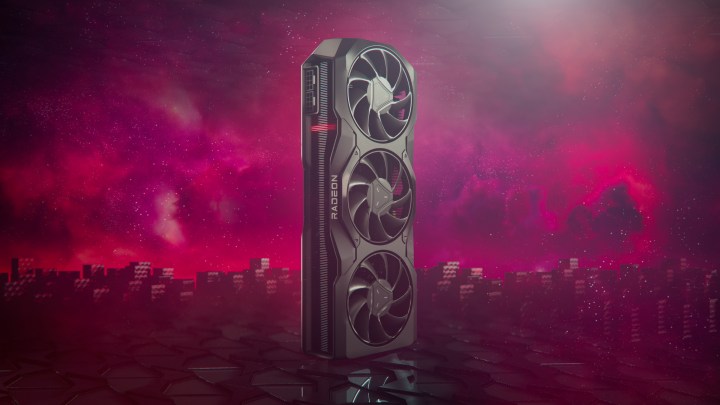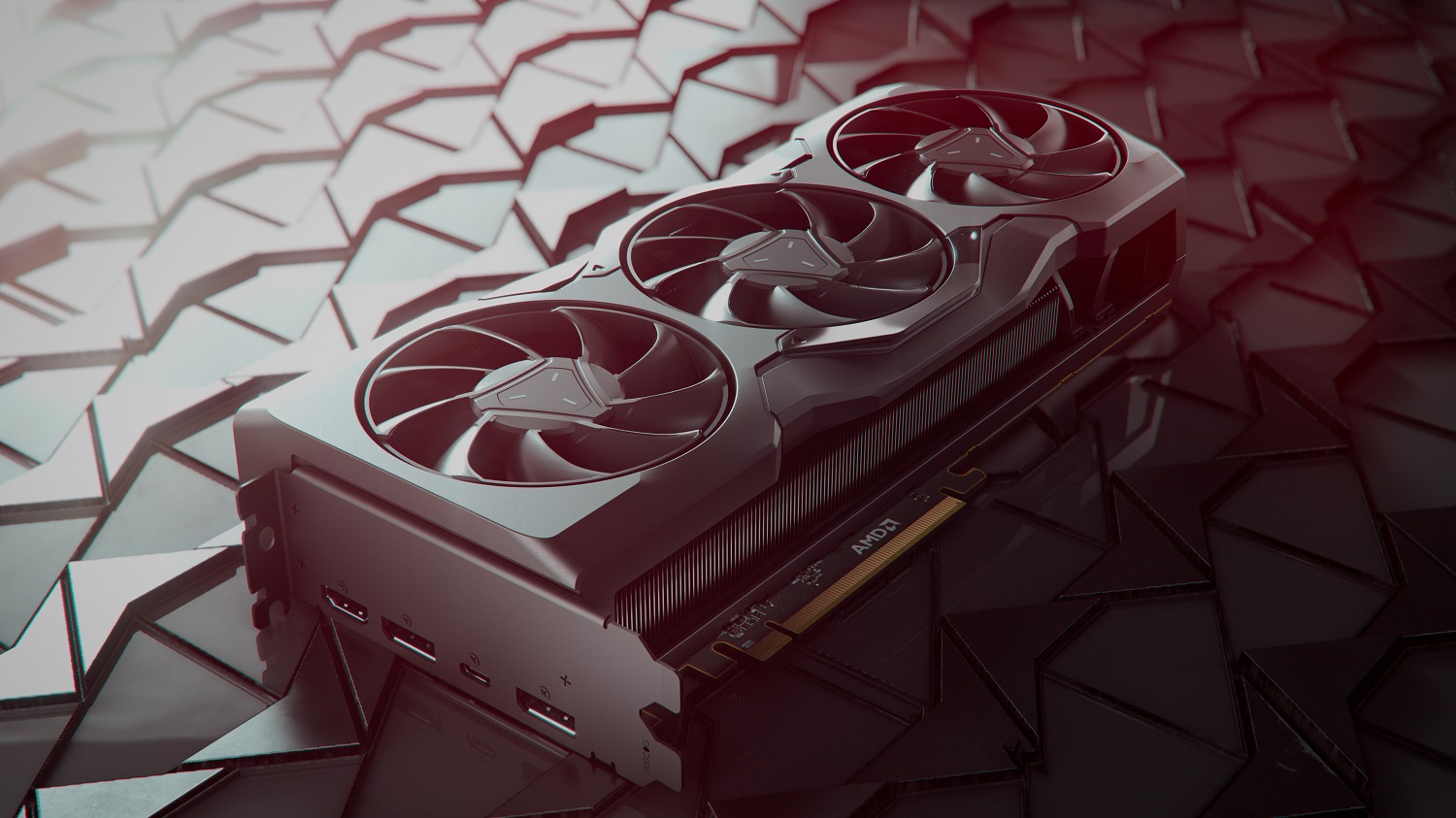AMD’s latest Radeon RX 7000-series is Team Red’s big riposte to Nvidia’s RTX 40-series. For Nvidia, the current reigning leader of the pack is the RTX 4090; an expensive, but immensely powerful GPU. In the case of AMD, we have two cards sitting near the top — the RX 7900 XT and the RX 7900 XTX. How does AMD’s new headliner compete with Nvidia’s flagship?
If you’re wondering which GPU will reign as the best of the best, you’ve come to the right place.
Pricing and availability

Nvidia’s flagships are known for a lot of things, but being cheap is not one of them. The Nvidia GeForce RTX 4090 was released on October 12, 2022, and the basic Founders Edition model costs $1,599. Custom versions made by Nvidia’s partners, such as MSI, Gigabyte, and Asus, cost more, nearing the $2,000 mark in some cases.
The GPU sold out quickly at most retailers despite the eye-watering price tag. Scalpers are attempting to re-sell it, charging a fairly high markup, so you may not be able to score an RTX 4090 for the recommended price just yet. Hopefully, over time, the price will normalize.
AMD is usually slightly more reasonable than Nvidia when it comes to the pricing of its products, and this truth holds up when it comes to the new lineup, too. The RX 7900 XTX is certainly more agreeably priced. First announced on November 3, the GPUs are set to hit the market on December 13, priced at $999. For reference, the not-quite-flagship RX 7900 XT will cost $899.
This makes the new AMD flagship much, much more affordable, but there are still other things to factor into your consideration, such as the specifications and the performance of both the Nvidia and the AMD cards.
Specs

Both the RTX 4090 and the RX 7900 XTX introduce new technologies and architectures for their respective manufacturers. In the case of Nvidia, the RTX 4090 is the flagship, built on the new Ada Lovelace Architecture and TSMC’s N4 manufacturing process. For AMD, the Radeon RX 7900 XTX is the king of the hill, somewhat closely followed by the RX 7900 XT.
The new AMD Radeon RX 7900 XTX belongs to AMD’s latest RDNA 3 lineup, was built on a 5nm process, and houses a Navi 31 XT GPU die. AMD went with an interesting new approach, similar to that used in the Ryzen 7 5800X3D, and used a 5nm graphics compute die (GCD) as well as a 6nm memory cache die (MCD) in the same GPU, stacking them on top of each other. This lets the GPU pack more punch and is assisted by the massive 96MB of Infinity Cache.
Unfortunately, although the RDNA 3 powers do give the 7900 XTX a considerable boost over its predecessor (the 6900 XT), it may not quite be a match for Nvidia’s behemoth of a GPU — at least not in terms of specifications alone. On the other hand, it’s difficult to compare the two, seeing as they each have different architectures.
We’ll have to see how the two match up once we can test the new AMD graphics card.
| AMD Radeon RX 7900 XTX | Nvidia GeForce RTX 4090 | |
| Cores | 6,144 | 16,384 CUDA cores |
| Maximum clock | 2,300MHz (Game clock) | 2,520MHz |
| Memory size | 24GB GDDR6X | 24GB GDDR6X |
| Memory bus | 384-bit | 384-bit |
| TBP | 355W | 450W |
Performance

We’ve had a chance to test the RTX 4090 extensively, both in gaming and in synthetic benchmarks, and the verdict is clear — it’s a very powerful GPU, easily the best one on the current market. However, it’s expensive, and there aren’t many games that can take proper advantage of its intense capabilities.
Nvidia’s flagship is capable of smoothly running AAA games at max settings and at 4K. It even proved itself by running Genshin Impact at 13K, which, although impractical, is a pretty insane feat.
In our testing, the GPU easily destroyed the competition, scoring 102% more than the RTX 3090 in Port Royal and 58% more in 3DMark Time Spy. In gaming, these results hold up, and the RTX 4090 makes an impression at high resolutions. On average, the GPU was 68% faster than the RTX 3090 Ti in 4K gaming. This includes really high frame rates across titles like Cyberpunk 2077 (78.6), Forza Horizon 5 (176.3), and Gears Tactics (171.7). Mind you, all of these were achieved at the maximum possible settings.
The RTX 4090’s 1440p performance is also pretty outstanding, providing a 48% increase over the RTX 3090 Ti and a 68% boost over the AMD RX 6950 XT. However, no one should be buying this GPU just to play at 1440p — there are excellent 1440p graphics cards that won’t cost you $1,600.
Nvidia’s RTX 4090 also grants access to supreme ray tracing capabilities and the latest DLSS 3 that can conjure up entire frames instead of just pixels. All of that adds up to fantastic gaming performance, albeit at a high price.
Historically, AMD has not been as good at ray tracing as Nvidia is, and even if the RX 7000 series proves far better at it, we may not see a new ray tracing king any time soon. However, AMD has placed its bets heavily on the performance-per-watt area this time around, meaning that the 7900 XTX is likely to be a balanced GPU. If it has solid rasterization performance and good-enough ray tracing for those who want it, that might be enough.
When we get our hands on the RX 7900 XTX, we’ll be able to test it for ourselves. AMD’s own metrics paint a rather interesting picture. It definitely brings a major performance boost over its predecessor, the RX 6900 XT, with some early leaks predicting an uplift of up to 130%. This is thanks to the multi-die Navi 31 GPU housed inside. AMD itself promises to deliver a 54% gen-over-gen upgrade.
AMD has also shared some early gaming metrics. While time will tell how accurate they are, AMD boasts that the 7900 XTX was able to hit 300 frames per second (fps) in Apex Legends, 600 fps in Overwatch 2, and a whopping 833 fps in Valorant. In 4K gaming and at high refresh rates, the GPU reached as high as 275 fps in Hitman 3, 306 fps in Modern Warfare II, and 353 fps in F1 22.
Those are some really impressive numbers, but how will it really compare to the RTX 4090? Odds are that the Nvidia GPU will beat it in some ways, but that doesn’t necessarily mean it’s the better option for everyone.
It depends on your needs

Based on everything we know right now, which GPU is going to be better? Is Nvidia’s RTX 4090 the winner, or does AMD’s RX 7900 XTX hold up?
Until we’ve tested the new AMD release ourselves, we can’t make any judgments with full certainty. However, it’s a pretty safe bet to say that Nvidia will retain its spot atop the list of the best graphics cards available this year.
The RTX 4090 is an insanely powerful GPU, capable of handling most things you could imagine. On the other hand, it’s expensive, and it hasn’t avoided controversy during its (still short) run. It’s a massive card, and the cable that comes with it can’t handle bending, meaning that there have been instances of the power connector and cable melting when under pressure. Sure, this problem only seems to affect a small percentage of RTX 4090 owners, but it’s still a problem entirely avoided by AMD, seeing as it won’t be using the 12VHPWR connector that seems to be the culprit in Nvidia’s case.
For now, based on what AMD has said, it certainly sounds like the 7900 XTX will be the more affordable and reasonable option of the two GPUs. Not many people really need an RTX 4090, so unless you’re strictly playing AAA games on max settings on multiple 4K monitors, you’ll find the performance of the 7900 XTX will likely be sufficient for your needs.
AMD is aiming heavily for the performance-per-watt segment, and in that regard, the 7900 XTX might truly shine. With a TBP of just 355 watts, this is a GPU you may not even need to buy a new power supply for. Despite keeping things realistic, both in terms of pricing and power usage, the 7900 XTX sounds like a great GPU capable of satisfying most gamers.
If you’re asking yourself which GPU to get, the answer depends on how much you want to spend and how much you really need the kind of top-shelf performance provided by the RTX 4090. In all likelihood, both of these cards will be good, so only you can tell which way suits you best — better value or better performance.
Editors’ Recommendations
